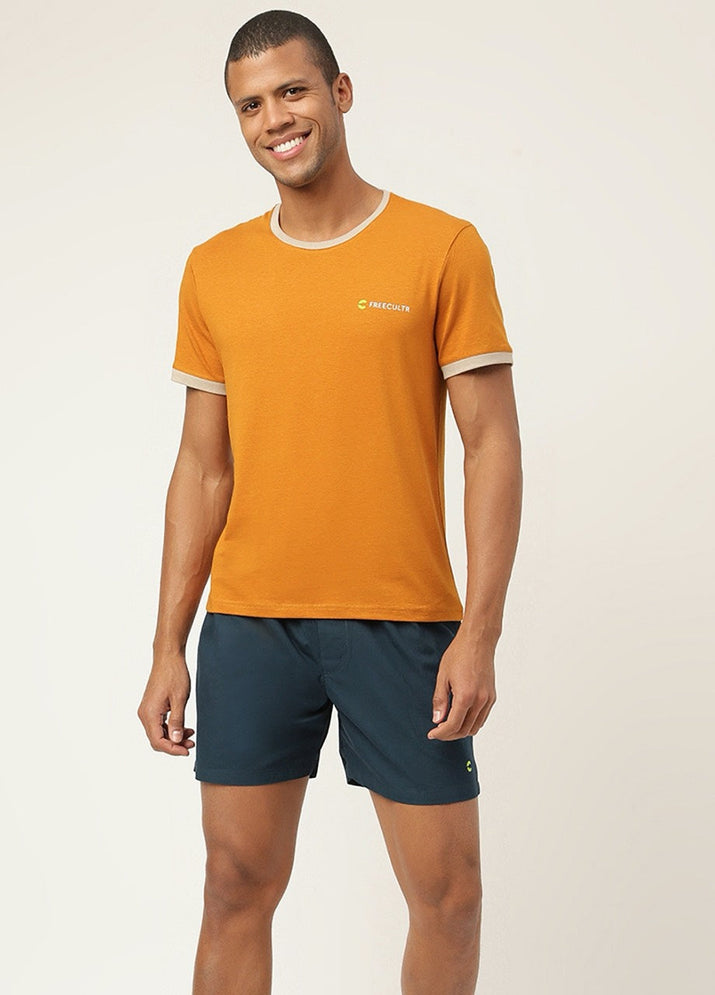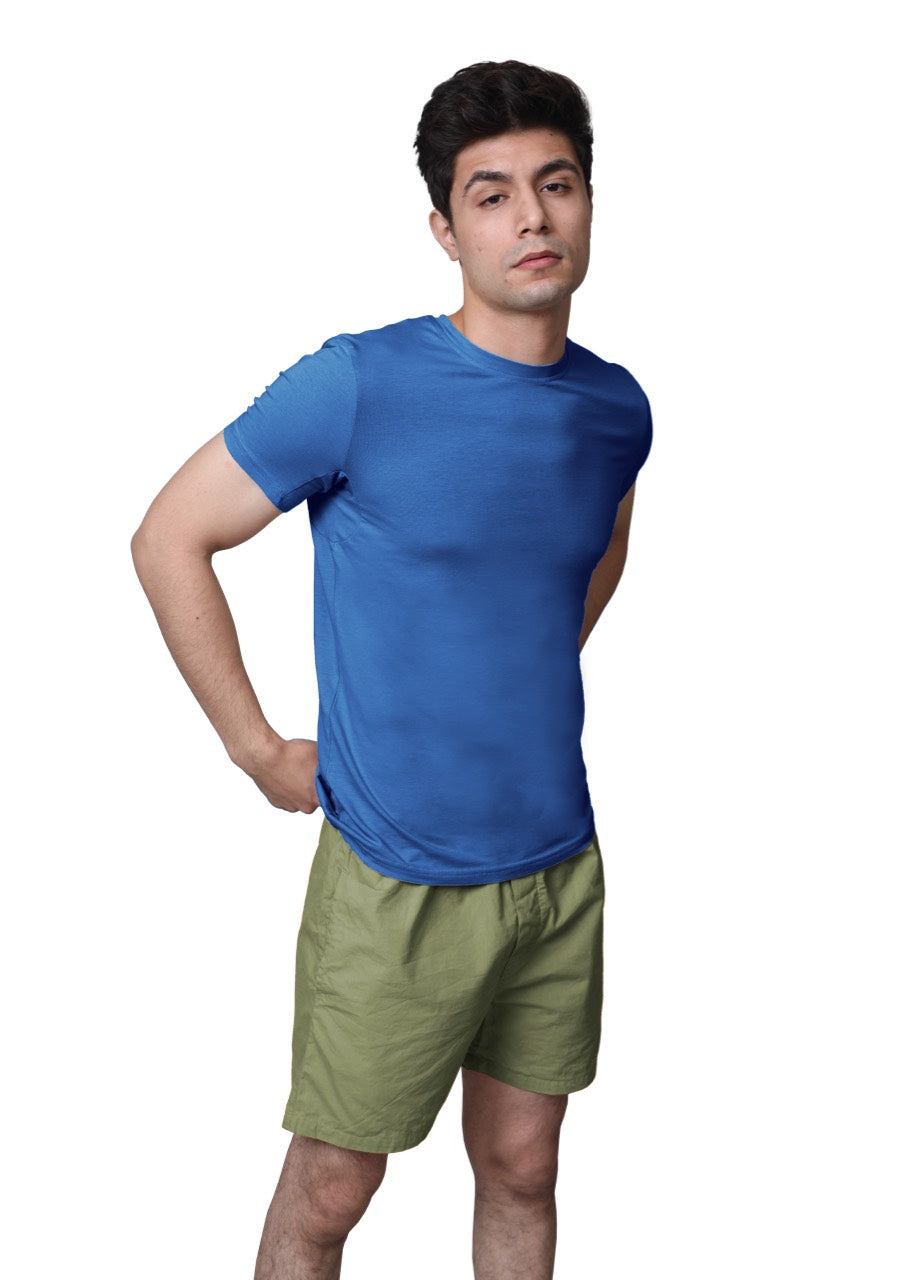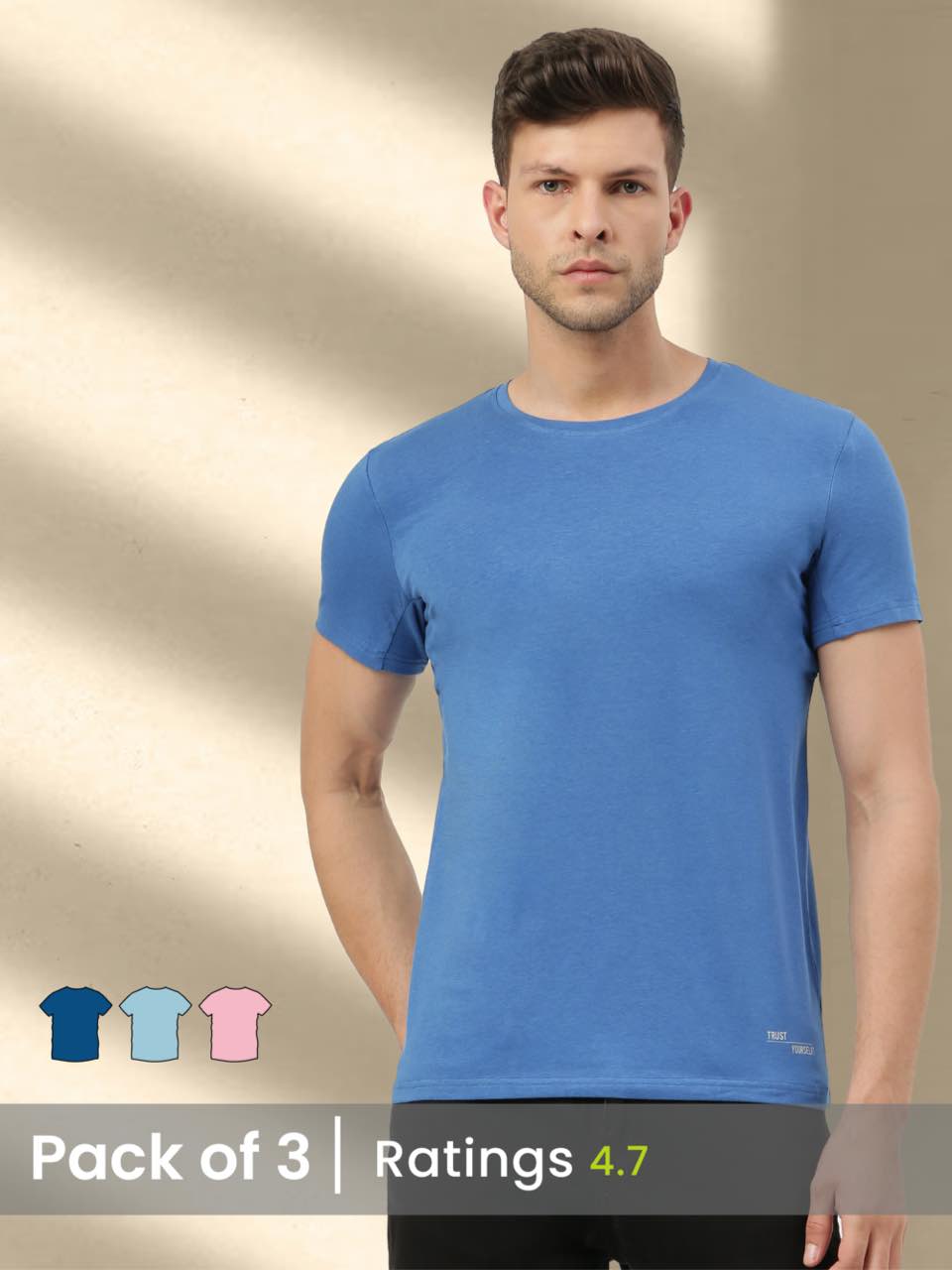Tired of athletic wear that fades faster than your motivation after leg day? We explore the critical interplay between fabric composition and performance, addressing the pervasive issue of color degradation and sweat-soaked discomfort in active apparel. This exploration delves into the science behind moisture-wicking capabilities, specifically examining advanced fiber structures like those found in performance-grade polyester blends. We'll uncover how these structures facilitate rapid sweat evaporation, alongside the fade-resistant properties achieved through innovative dye encapsulation techniques, ensuring your gear looks as good as it performs, wash after wash.

Understanding Moisture Wicking: Keeping You Dry and Comfortable
Moisture wicking refers to a fabric's ability to pull moisture (sweat) away from the skin and transport it to the outer surface of the material where it can evaporate. This process helps regulate body temperature and keeps you feeling dry and comfortable, especially during physical activities or in hot and humid conditions. In the realm of fashion and comfort, moisture-wicking fabrics have revolutionized activewear and everyday apparel.
The key to moisture wicking lies in the fabric's structure and the properties of the fibers used. Typically, these fabrics are made from synthetic materials like polyester, nylon, or polypropylene, which are hydrophobic (water-repelling). This means they don't absorb water like natural fibers such as cotton. Instead, the moisture is drawn through the fabric via capillary action, moving along the fibers' surfaces to the outside.
Here's a breakdown of the science:
- Hydrophobic Fibers: Synthetic fibers resist absorbing moisture, allowing sweat to move through the fabric.
- Capillary Action: Specialized weaves and fiber shapes create tiny channels that draw moisture away from the skin. Think of it like water traveling up a narrow tube.
- Surface Area: The increased surface area on the outside of the fabric allows for faster evaporation.
Example: Imagine running a marathon in a cotton t-shirt versus a moisture-wicking shirt. The cotton shirt will quickly become soaked with sweat, clinging to your skin and making you feel heavy and uncomfortable. The moisture-wicking shirt, on the other hand, will pull the sweat away from your body, allowing it to evaporate and keeping you feeling drier and more comfortable throughout the race.
Fade Resistance: Maintaining Vibrant Colors
Fade resistance describes a fabric's ability to retain its original color and appearance after repeated exposure to sunlight, washing. Other environmental factors. A fade-resistant tee will maintain its vibrancy and avoid looking dull or washed out over time. This is particularly essential for colored or printed garments.
Several factors contribute to fade resistance, including:
- Dye Quality: The type and quality of dyes used are critical. Reactive dyes, for example, chemically bond with the fabric fibers, making them more resistant to fading compared to cheaper, less stable dyes.
- Dyeing Process: The dyeing process itself plays a role. Proper dye penetration and fixation are essential for ensuring that the color is locked into the fabric.
- UV Protection: Some fabrics are treated with UV inhibitors, which absorb or reflect ultraviolet radiation from the sun, preventing the dyes from breaking down.
- Fabric Construction: Densely woven fabrics tend to hold color better than loosely woven ones.
The Science Behind Fade Resistance: Color fading occurs when the chemical bonds of the dye molecules are broken down by external factors such as UV radiation, heat. Chemicals (like those found in detergents). High-quality dyes and protective treatments minimize this breakdown, extending the life of the garment's color.
Real-World Application: Think about a vibrant red t-shirt you bought last summer. If it wasn't fade-resistant, after a few washes and some time spent in the sun, it might turn a dull pink. A fade-resistant t-shirt, But, would retain its bright red color much longer.
Moisture Wicking and Fade Resistance: Technologies at Play
Several technologies enhance both moisture-wicking and fade-resistant properties in modern tees:
-
Wicking Technologies:
- Mechanical Wicking: This involves modifying the fabric's structure to create channels that facilitate moisture transport. Examples include fabrics with a raised surface or a specific weave pattern.
- Chemical Wicking: This involves applying chemical treatments to the fabric that enhance its ability to draw moisture away from the skin. These treatments typically involve hydrophilic (water-attracting) polymers that coat the fibers.
-
Fade-Resistant Technologies:
- Reactive Dyeing: As noted before, reactive dyes form a strong chemical bond with the fabric, making them highly resistant to fading.
- UV Inhibitors: These chemicals absorb or reflect UV radiation, protecting the dyes from breakdown. Titanium dioxide is a common UV inhibitor used in textiles.
- Colorfastness Treatments: These treatments improve the dye's resistance to washing, light. Other environmental factors. They often involve cross-linking agents that stabilize the dye molecules.
Case Study: Performance apparel companies often use a combination of these technologies to create high-performance tees. For example, a running shirt might be made from a polyester fabric with a mechanical wicking structure, treated with a chemical wicking agent. Dyed using reactive dyes with UV inhibitors. This combination ensures that the shirt keeps the wearer dry, comfortable. Looking good for a long time.
Comparing Fabrics: Moisture Wicking and Fade Resistance
Different fabrics offer varying levels of moisture wicking and fade resistance. Here's a comparison:
| Fabric | Moisture Wicking | Fade Resistance | Pros | Cons |
|---|---|---|---|---|
| Polyester | Excellent | Good | Durable, lightweight, affordable | Can retain odors, not as breathable as natural fibers |
| Nylon | Very Good | Good | Strong, abrasion-resistant, stretchy | More expensive than polyester |
| Polypropylene | Excellent | Fair | Very lightweight, hydrophobic | Can be less comfortable than other synthetics |
| Cotton | Poor | Poor | Breathable, comfortable, affordable | Absorbs moisture, prone to fading |
| Merino Wool | Good | Fair | Naturally moisture-wicking, odor-resistant, comfortable | More expensive than synthetics, requires special care |
Explanation: Polyester and nylon are generally the best choices for moisture wicking and fade resistance. Cotton, while comfortable, is not a good option for activities where moisture management is crucial. Merino wool offers some moisture-wicking benefits but is more prone to fading than synthetics.
Real-World Applications and Use Cases
Moisture-wicking and fade-resistant tees are used in a wide range of applications:
- Athletic Wear: Running, cycling, hiking, gym workouts. Team sports. These tees keep athletes dry and comfortable, improving performance.
- Outdoor Activities: Camping, fishing. Gardening. The moisture-wicking properties prevent discomfort from sweat. The fade resistance ensures the tee looks good even after prolonged sun exposure.
- Workwear: Construction, landscaping. Other outdoor jobs. These tees provide comfort and durability in demanding environments.
- Everyday Wear: Casual wear for hot and humid climates. Moisture-wicking tees can help you stay cool and comfortable throughout the day.
- Uniforms: Sports teams, corporate events, schools. Organizations.
Personal Anecdote: I once went on a multi-day backpacking trip wearing a non-moisture-wicking cotton t-shirt. By the second day, it was soaked with sweat and grime, making me feel cold and uncomfortable. On my next trip, I wore a moisture-wicking polyester tee. The difference was night and day. I stayed dry and comfortable, allowing me to enjoy the experience much more. It was a true testament to the value of fashion and comfort that delivers performance.
Choosing the Right Tee: Key Considerations
When selecting a moisture-wicking and fade-resistant tee, consider the following factors:
- Material: Opt for synthetic fabrics like polyester or nylon for optimal moisture wicking and good fade resistance.
- Construction: Look for fabrics with a tight weave and a smooth surface for better moisture transport and color retention.
- Dye Quality: Inquire about the type of dyes used. Reactive dyes are generally the most fade-resistant.
- Treatments: Check if the fabric has been treated with UV inhibitors or other colorfastness treatments.
- Fit: Choose a fit that is comfortable and allows for freedom of movement.
- Brand Reputation: Research brands known for producing high-quality performance apparel.
- Price: While quality is crucial, consider your budget and look for a tee that offers a good balance of performance and value.
Expert Opinion: According to textile engineer Dr. Emily Carter from the American Association of Textile Chemists and Colorists (AATCC), "The combination of high-quality synthetic fibers, advanced dyeing techniques. Protective treatments is essential for creating moisture-wicking and fade-resistant apparel that meets the demands of modern consumers."
Conclusion
Let's recap the essentials: choosing tees that stand up to your active lifestyle means prioritizing moisture-wicking fabrics and fade-resistant dyes. These aren't just buzzwords; they're the keys to a tee that lasts longer, feels better. Keeps you looking sharp. Think of that old cotton tee you loved, now relegated to the back of the drawer because it's faded and stretched – with the right choices, you can avoid that fate. My personal tip? Don't just look at the price tag. Investigate the fabric composition and dyeing process. A slightly higher upfront cost often translates to significant savings (and less waste!) in the long run. Consider brands like Freecultr (check out their commitment to ethical sourcing here), where durability meets sustainability. Now, go forth and build a tee collection that's ready for anything! The confidence that comes from wearing clothes that perform well and look great is truly empowering. You deserve it.More Articles
Carbon-Conscious Comfort: How Freecultr Reduces Its Environmental ImpactThe Greener Wash: What Makes Freecultr’s Dyeing Process Eco-Friendly
Beyond the Basics: Why Freecultr is the Ethical Choice in Men’s Innerwear
Fair Wages, Fair Practices: How Freecultr Supports Workers Behind the Seams
Inside Freecultr’s Mission to Make Sustainability Stylish
FAQs
So, what exactly does 'moisture-wicking' mean for these tees?
Good question! , it means the fabric is designed to pull sweat away from your skin and move it to the outer layer of the shirt where it can evaporate. Think of it like the tee is actively helping you stay dry and comfortable, even when you're working up a sweat.
Fade-resistant? Seriously? How long will these things really stay looking good?
Okay, let's be real, nothing lasts forever. But fade-resistant fabrics are treated to hold their color much longer than regular tees. Think multiple washes without that dull, washed-out look. You'll definitely get more mileage out of these before they start looking sad.
Are these moisture-wicking tees comfortable enough for everyday wear, or are they only for workouts?
Definitely comfortable enough for everyday! In fact, that's a big part of the appeal. They're not just for the gym. The moisture-wicking keeps you feeling fresh even on hot days or if you're just running errands. It's like a built-in comfort upgrade.
What kind of fabric are we talking about here? Is it going to feel weird on my skin?
Most moisture-wicking tees are made from synthetic materials like polyester or blends that include polyester. They are designed to be soft and comfortable against the skin. Some brands use special weaves or treatments to enhance the feel. Avoid cotton if you want the best wicking.
How do I wash these things to keep them moisture-wicking and fade-resistant?
Generally, machine wash cold with similar colors and tumble dry low. Avoid using bleach or fabric softener, as those can mess with the moisture-wicking properties. Also, turning them inside out before washing can help preserve the color.
Will they shrink in the dryer?
It depends on the specific fabric blend. Generally, these tees are designed to resist shrinking. Still, tumble drying on low heat is always the safest bet to minimize any potential shrinkage.
Are fade-resistant tees also resistant to sun damage? Like, will they protect my skin?
That's a smart question! While the dye is fade-resistant, that doesn't necessarily mean they offer significant sun protection. If sun protection is a priority, look for tees specifically labeled with a UPF (Ultraviolet Protection Factor) rating.






